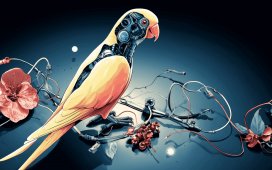Altacal Audubon Society birders Jim Thomas, left, Mary Muchowski, center, and Ken Sobon look north from Nelson Avenue near Oroville, California, Saturday, Dec. 30, 2023. They had spotted a couple of ravens perched on a PG&E electrical tower a few hundred feet away. (Ed Booth/Enterprise-Record)
OROVILLE — Stand in this secluded area on the unpaved portion of Nelson Avenue, just north of the Thermalito Forebay, and you might be surprised by how quiet it is.
Despite being smack in-between two important state highways, among the only noises out here are occasional moos of grazing cows, periodic whispers from gusts of wind, and the gentle gurgling of storm runoff in roadside ditches. Mixed in are chirps and squawks from birds.
In fact, bird sounds such as those were pleasant invitations to the two dozen birders who fanned out in a 15-mile diameter in the Oroville area Saturday as they conducted the Oroville Christmas Bird Count, an annual event started in 1969.
Even though many types of birds are readily visible by humans keeping their range of vision at ground level, many of the winged creatures are “hidden in plain sight” and are available for discovery just by looking upward. Spotting them might require some special equipment — such as binoculars, or “spotting scopes” — but even novices can pick up quick experience and enjoy witnessing movement of these animals.

Ken Sobon of Chico led a three-member group of birders Saturday morning. The rain-or-shine ritual took place under cloudy (and occasionally threatening) skies, but Friday’s storm had mostly moved through the area and what was left had largely expended its energy. Very light sprinkles and mist were about all that was left of the system.
Sobon, president of the Chico-based Altacal Audubon Society, joined Mary Muchowski, the society’s executive director, and Davis resident Jim Thomas as they traveled in a pickup along Nelson Avenue. Their leisurely pace allowed them to be on constant lookout for birds of all types, whether in flight or perched on objects — mostly man-made ones, such as fence posts and power lines, because trees are in short supply in the area.
The trio stopped along the road after noticing a bird resting on a PG&E tower about a quarter-mile south. They got out of the truck and pointed their spotting scopes and binoculars at the tower, eager to determine the type of bird up there.
“It’s a red-tailed hawk,” Sobon announced as the others nodded in agreement. Even the best pair of eyes would have difficulty identifying a bird at such a distance, but the spotting scope — a monocular that looks a bit like a telescope — brings such birds into vivid focus without scaring them away.
“There are a lot of raptors and hawks that migrate here for the winter,” Sobon said.
He added that the group expected to see about 30 bald eagles during the course of their survey, which began at 8 o’clock Saturday morning and would wrap up at 4:30 p.m.
“They’re more common than people think,” Sobon said.
Muchowski said wildlife officials removed the bald eagle from the federal endangered species list about five years ago, though the bird remains on California’s list.
‘Citizen science’
Is this annual exercise just for the pleasure of the participants, or is there some scientific value behind it? Well, a little bit of both, Muchowski said.
She explained that most of the birders — divided into groups of three, “split up to make it more manageable” — recorded their observations and would enter them at some point soon into Ebird, a database that the Cornell University Lab of Ornithology maintains. The database contains millions of entries and not only serves as a record of personal bird spotting, but also as a means for researchers to monitor bird movements in large regions.
“It’s a type of citizen science,” Muchowski said. “The reports people file then go to a massive worldwide database. It’s there for people to keep their ‘life lists,’ but also how many birds they spot in California and in Butte County.
“This humongous database helps researchers keep track of birds,” she said — an important study as climate change alters migration patterns, as an example. Biologists can better understand birds’ habits just by the locations birders submit.

The National Audubon Society instituted the Christmas Bird Count in 1900; birders in Chico began their annual observation in 1956. There is also a “breeding bird survey” in the summertime each year and the combined information from the summer and winter events creates a good bit of ornithological material.
A few minutes after noticing the red-tailed hawk on the tower, Thomas, Muchowski and Sobon noticed another hawk. It turned out to be a ferruginous hawk, so named because of some iron-colored feathers on its wings.
“It’s down here from Canada for the winter,” Sobon said, confirming this information with some images on his mobile phone, along with a map showing regions where the variety lives.
“The ferruginous hawk likes to perch in grasslands,” Sobon added. “This is the first one we’ve seen today. I’m surprised we haven’t seen more raptors.”
Thomas said he attends six sessions per season, with the season running from Dec. 14 until Jan. 5.
“I have a daughter who used to live in Chico, and I got to know Ken and Mary,” Thomas said, adding that his daughter moved away but he still enjoys coming to the area for the counts.
Muchowski said all participants were scheduled to gather at a Chico pizza restaurant after Saturday’s count to discuss their observations from the day.











